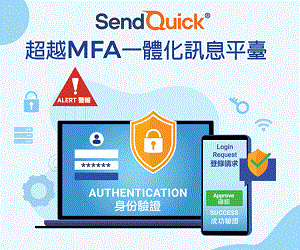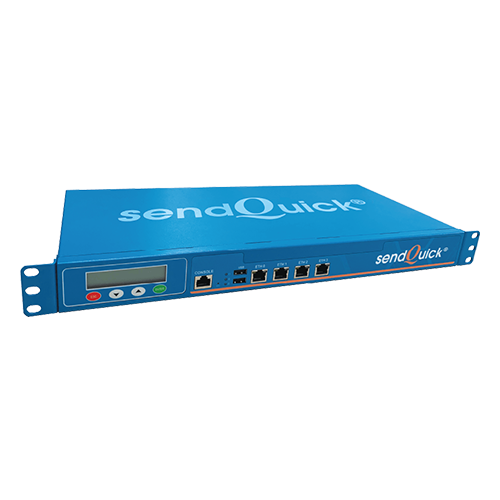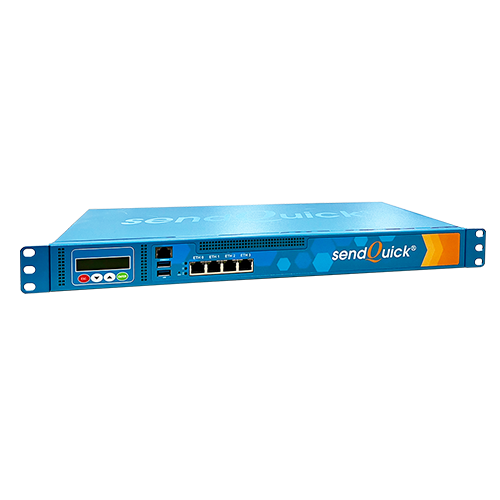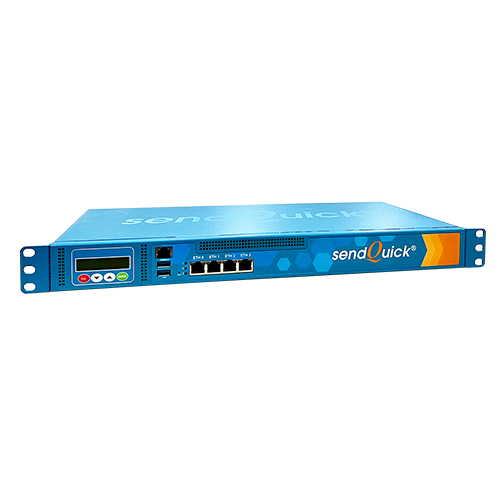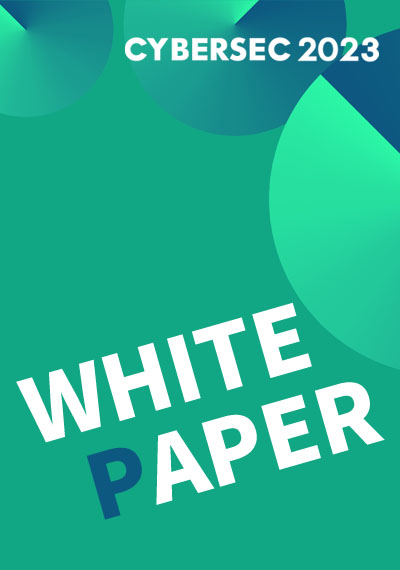
SendQuick Pte Ltd - Innovating Communications
Established since 2001, SendQuick (formerly TalariaX) develops innovative enterprise mobile messaging solutions and more, helping customers around the world to innovate and unlock business value for growth. Our range of business mobile messaging solutions is geared towards providing security and confidentiality of company information and mitigating disruption during unplanned system downtime. Our Enterprise Messaging Solutions include IT Alerts (including IT SMS Alerts) & Notifications, Secure Remote Access via Multi-Factor Authentication, Business Process Automation, Enterprise Messaging Broadcast and Automated Call Tree Systems.
Headquartered in Singapore, SendQuick is your Innovative Partner for future-proof enterprise mobile messaging solutions -- used by many corporations including Fortune Global 500 companies, in over 40 countries across the banking, finance, insurance, manufacturing, retail, government, education, and healthcare sectors.
產品類型
- Incident Response
- Multi-Factor Authentication
- Business Continuity Management
Receive Instant Critical Alerts
when your IT Systems Fail
Protect revenue and improve customer experiences by resolving critical incidents faster and preventing future occurrences. Reduce downtime by sending out instant two-way alerts & notifications through SMS, messaging platforms such as Whatsapp, WeChat, Line, Viber, Telegram, Messenger or collaboration tools such as Slack, Microsoft Teams and Cisco Webex.
MFA with One-Time Password (OTP)
via SMS, Email and Soft Token
The ideal solution for companies seeking low-cost and seamless MFA implementation.
It comes built-in with a server with One-Time-Password (OTP) generator capability and sends it across via SMS, Email or Push to SendQuick mobile app.
It also includes support for Soft Token OTP, supporting any standard SHA-256 soft token. End-users need not have access to the password via any other devices, apart from the mobile phone.
SendQuick Conexa integrates well with your Active Directory or RADIUS and can support multiple SSL VPN sessions as required.
Replace Manual Procedures
with Task Automation
Emergency broadcasts; delivery notifications; job dispatch messages; inventory updates; IT alerts; and more.
Free up manpower resources by automating these backend processes, and get IT Alert Notifications to improve front-end customer service engagements.
Emergencies, such as national weather disasters or cyberattacks, can strike out of the blue and disrupt business operations without notice. This unpredictability is why having both a business continuity plan and an advanced emergency alert system is critical to an organisation’s survival. A relevant example is the recent pandemic, wherein 34% of employers had no emergency preparedness plan before government entities enforced the lockdown restrictions.
Suffice to say, those trying to recover with no emergency management plan to follow are facing an uphill battle given the cost involved in business recovery. Hence, it is common for some companies to fail in just the first year after a major incident. Modern emergency alert systems now go beyond just organisation-wide employee notifications; it also ensures the well-being of employees, improves interdepartmental communications, and minimises the company’s economic loss. Below, we go over four essential features every top-notch emergency alert system software should have.
Elevating security in today’s increasingly risky digital landscape would not be complete without multi-factor authentication (MFA) — a critical component that helps prevent or mitigate incidents such as account takeover fraud and credential stuffing attacks.
Often interchangeably used with two-factor authentication (2FA), MFA is the layered approach to verifying the identity of users to ensure they have the appropriate permissions to access protected systems (e.g., networks, applications, websites, etc.) or perform certain tasks within them. Implementing MFA requires users to provide multiple identity credentials or authentication factors to secure access clearance into a system and even physical buildings.
The combined use of multiple authentication factors—something you know (passwords), something you have (OTP), something you are (biometrics) factors and more—before gaining access is what makes it much more difficult for unauthorised users to gain access to secured systems. There are several different ways to adopt MFA, and the method(s) used largely depends on the level of security required and the types of systems being accessed. For instance, high-level security systems like healthcare and financial applications may leverage MFA, which uses two or more of the authentication factors mentioned to ensure robust protective measures.
When deciding to implement MFA into certain aspects of your organisation, it is vital to get to know the various approaches available first and learn the strengths and weaknesses associated with each one.
Which MFA is right for your business?
1. One-Time Passcodes (OTP)
OTP requires a user to input the unique numeric or alphanumeric passcode sent to their registered device via SMS text or email in combination with their usual username-password credentials.
Pros
OTP is the most common form of 2FA that is intuitively familiar and easy to use for everyone.
Cons
Although convenient, there are several risks involved with OTP, such as the user’s phone number getting stolen (also known as SIM swapping), which could expose their accounts if they mainly use SMS OTP. Another potential risk is when a user falls for a social engineering attack and willingly passes their OTP code to a threat actor.
2. Time-based OTP (TOTP) and other software authenticators
TOTP requires a user to confirm that they are in control of their device within a given time frame by entering a unique passcode generated through apps such as Microsoft Authenticator, Google Authenticator, Authy, and others.
Pros
By using TOTP applications, users can avoid some of the risks involved in OTP by tying the verification process to an application on their device instead of phone numbers or emails. Moreover, unlike external hardware authenticators like Yubikeys, which come at a cost, users can freely download these applications onto their devices.
Cons
TOTP is only commonly used in many financial applications due to the sensitivity involved, and does not see much use outside of that. The extra steps involved in setting up TOTP (downloading the authenticator app) mean it has higher friction than OTP.
3. Built-in device biometrics
Built-in device biometrics require a user to verify their identity using the same biometric identification technology they use on their phones, laptops, and other devices. Fingerprints, facial, iris, voice, and palm or finger vein patterns are the most popular markers used in biometric identification. This method typically verifies possession of a biometric marker and a user’s device.
Pros
By verifying both a biometric marker and possession of a device, it offers two distinct factors of verification in themselves. Moreover, this approach is an unphishable form of MFA since there is no easy way of sharing verification with a remote attacker.
Cons
The security advantage of biometrics is also one of its shortcomings, particularly in user experience. By being bound to devices, users losing or switching devices will be faced with account recovery issues.
4. Hardware authenticators
Hardware authenticators are cross-platform ‘keys’ that allow a user to use a physical device separate from their phone, laptop, and other devices to verify possession of a unique authentication factor.
Pros
Hardware authenticators are similar to device biometrics in that they are also an unphishable form of MFA. In addition, their cross-platform feature is important since users can use this authentication factor across different devices, from desktop to mobile.
Cons
For some users, hardware authenticators can be too complex on top of the additional cost they require. As such, these devices are generally more popular among expert users.
Step-up authentication and how it balances security and user friction
Step-up authentication is a distinct type of MFA that requires an extra authentication level only when attempting to do any high-risk operations in a system. An example is when a customer uses a banking application on their mobile device. Naturally, they must log in before they can view their profile and check their transaction history, a process they may or may not choose to secure with 2FA. However, should they perform something risky like transferring a large sum to another account, the banking app will enforce a mandatory additional authentication method such as OTP, biometrics, or others before proceeding.
As shown in the previous example, step-up authentication only requires verification for particularly sensitive routes in an application. By asking for additional information, IT administrators can then use various authentication levels depending on the sensitivity of the resources.
A better idea would be to combine step-up authentication with adaptive MFA, another approach that requires further authentication only for certain user characteristics, such as using a suspicious or new IP address. This comprehensive strategy with both step-up authentication and adaptive MFA is more powerful than using the two individually when securing critical access to resources and sensitive actions.
Conclusion
Cybersecurity is something that every organisation can always improve on, and the fast-paced nature of technology only reinforces this need to always stay on top of best practices. Multi-factor authentication and its added security is one such practice that has quickly become one of the cornerstones of security frameworks that protect against all kinds of cyber threats.
Remove the hassle of implementing MFA today with the help of SendQuick, Singapore’s leading provider of enterprise mobility solutions. Easy to implement and with minimal maintenance, SendQuick Security and MFA provides the extra layer of security you need to effectively minimise the risk of a wide range of potential cyber-attacks – it equips clients with secure remote access via MFA using SMS and Email One Time Password (OTP), Mobile Soft Token and SingPass.
Apart from security and MFA, we also offer other industry-leading solutions like business process automation, IT alert management systems, and SMS gateway in Singapore. To learn more about our products, visit our solutions page today or contact us to speak with a SendQuick expert for more details.
With the rapid introduction of new technologies, organisations and their operations are moving faster than ever. For instance, cloud-based tools that streamline sales processes, the supply chain, and customer support are helping enterprises skyrocket their efficiency and, ultimately, their bottom line as well. One of the most recent of such tools is enterprise broadcast messaging.
This enterprise messaging solution helps automate and track workflows — two key ingredients to successful operations, especially in channels such as web forms, email, business chats and SMS. Since most people today spend a lot of time on their phone —around an average of 90 minutes a day according to a study — SMS has a high read rate of up to 98%. As such, enterprise broadcast messaging is ideal for workflows that require a timely response, typically in departments such as operations, sales, marketing, and, most importantly, customer service.
Read on to learn the value that enterprise messaging solutions in Singapore adds to your business operations.
Centralising Customer Service
Most enterprises that adopt enterprise broadcast messaging mainly use it to improve their customer service, which comes as no surprise given that 89% of consumers prefer the convenience of connecting with brands through messaging. In addition to catering to their target audience’s needs, enterprise broadcast messaging empowers customer service teams to:
Manage more chats simultaneously
Unlike other channels like phone calls which demand an agent’s undivided attention, enterprise SMS solutions can assist more customers at once through chat. Furthermore, they can quickly accomplish small extra tasks while waiting for a response, such as sending a delivery confirmation to a list. Afterwards, they can immediately return to the conversation.
Receive messages from different channels
One of the most notable advantages of enterprise messaging solutions is that they integrate with and receive messages from different channels, from SMS to other messaging platforms, all in one inbox. Customers, in turn, receive messages coming from those same channels.
Send custom messages in bulk
Businesses nowadays send customers all sorts of simple messages, from appointment reminders to order notifications. With enterprise messaging, they can also create more customised messages and audience segments to target the right messages to the right people for an effective yet personalised communications strategy.
Respond to queries quickly and accurately
The modern consumer now demands quick response times when they have questions they want answers to. Although chatbots help address this need, many still ask questions that only customer service agents can answer. Enterprise messaging software generally comes with automated routing that directs customers that use specific keywords to the right agent (for example, messages with the keyword “problem” are redirected to conflict resolution while “return” is handled by the returns department). This ensures they get accurate answers that quickly resolve their issues and improve their relationship with the brand.
Automate customer account management
Enterprise messaging solutions also empower customer service teams by integrating with Customer Relationship Management tools. Through this integration, customer data inputted in one system will automatically get updated in the other, which eliminates redundant or error-prone data management tasks.
Improving Marketing and Sales Processes
Enterprise messaging solutions also help marketing and sales teams improve their operations in many ways, such as:
Build relationships with customers
Thanks to automated business text message customisation, marketing teams can send out all kinds of content to the target audience with a personal touch. They can use lists to target relevant groups and reach out to customers with holiday greetings, industry-related tips, and other engaging and useful information.
Engage the target audience in an authentic way
Since reviewing and managing messages has become easier than ever through enterprise SMS, it makes for a great channel for special marketing services. For instance, a flower shop business could provide a helpline for simple customer questions such as how to care for flowers or insider tips on arranging them beautifully. Brands that sell clothing could also do the same by offering a personalised stylist helpline. These small yet personal touches can be quickly managed through SMS and increase customer loyalty.
Naturally increase conversions
A study found that approximately 90% of leads prefer to be reached through SMS than calls. By offering text messages as a means of communication, sales teams can improve their chances of successfully contacting potential clients and empower them to boost conversions easily. Remember, your business grows when you engage customers!
Streamlining Dispatch and Operations
Enterprise SMS can also be used to help businesses manage their internal staff. Be it during emergencies or simple day-to-day workflows, business SMS can improve various aspects of an organisation’s dispatch and operations, particularly in:
In-field roadblocks
Businesses with dispatch teams encounter various problems in their work, from incorrect addresses and keycodes to unplanned construction and other unforeseen issues. Dispatch teams can use SMS instead of phone calls or email (which often get ignored or checked too late) to quickly check back for a solution. If operations team members cannot provide one yet, dispatch can relay it to the client. Since nearly all texts are read within three seconds of receipt, clients generally view and respond quickly, which prevents scheduling backup.
Scheduling
Operations teams can customise text messages regarding holidays, daily scheduling, and other important information to internal staff quickly and easily. They can also schedule when these messages are sent to ensure that employees receive critical communications exactly when they need them.
Conclusion
Communication is a vital aspect of the success of modern businesses, be it within their organisation or outside of it with their customers. By leveraging the advantages of SMS, as discussed previously, businesses can improve various aspects of their operations, whether front-facing in their customer service or otherwise.
Ready to get started with enterprise broadcast messaging? Check out SendQuick’s products today! We are more than a traditional SMS gateway provider in Singapore and we have been developing innovative enterprise mobile messaging solutions for companies since our establishment in 2001. No matter if you are looking for a SNMP to SMS gateway in Singapore or business process automation, our brand is trusted by corporations across various industries worldwide.
